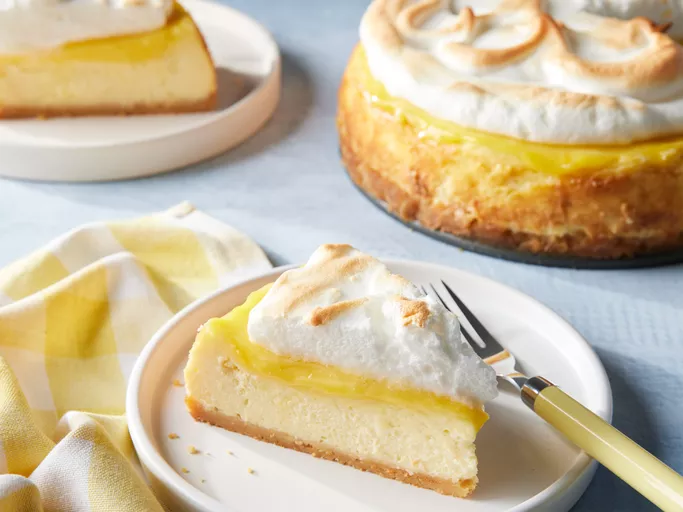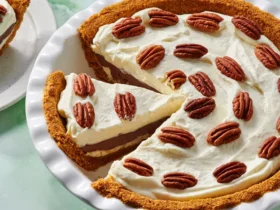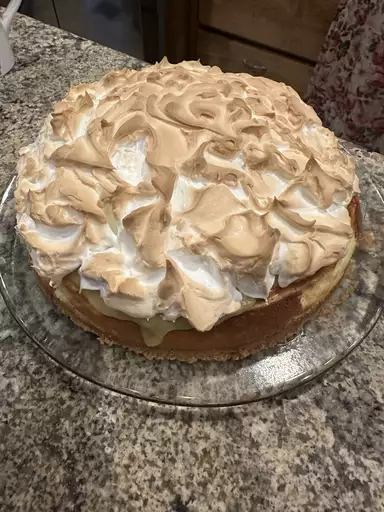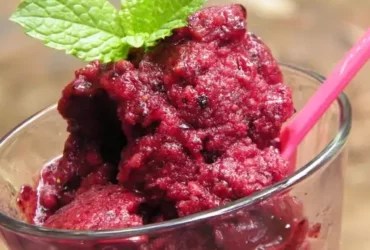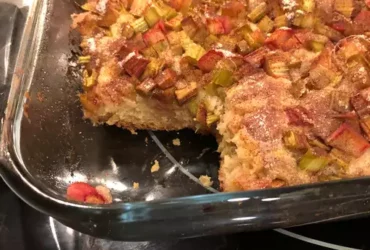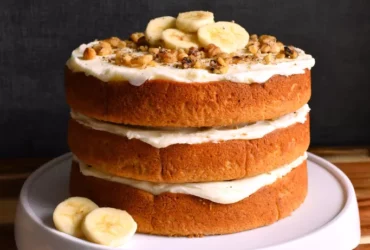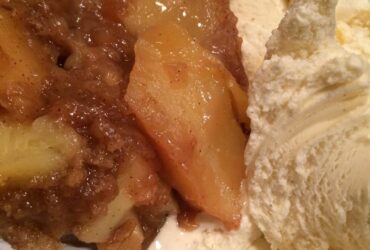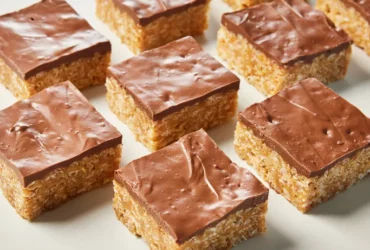Ingredients
Lemon Curd
The key to making a tangy and creamy lemon curd that’s essential for a classic Lemon Meringue Cheesecake Recipe lies in the selection of its ingredients.
Lemons are, naturally, the primary source of citrus flavor in this condiment, providing a sharp, acidic taste. To achieve the perfect balance, look for lemons with a good balance of sugar and acid, as these will yield the best results.
Sugar serves two purposes: it enhances the sweetness of the curd and acts as a stabilizer to prevent the formation of ice crystals when the mixture is chilled. For this recipe, you’ll want to use granulated white sugar that dissolves easily.
Eggs play a crucial role in thickening and enriching the texture of lemon curd. The whites help to stabilize the mixture, while the yolks provide moisture and creaminess.
Butter adds a richness and depth to the curd. Unsalted butter is best for this recipe as it won’t introduce any unwanted seasonings that might clash with other flavors in your cheesecake.
Vanilla extract contributes a hint of warmth without overpowering the citrus taste, making it an ideal addition to balance out the flavors.
Finally, salt serves a dual purpose: it enhances the flavor and texture of the lemon curd by reducing bitterness and balancing sweetness. Use high-quality sea salt or kosher salt for the best results.
The proportions of these ingredients will depend on your desired consistency and flavor profile. For a traditional lemon curd, aim to use:
1 cup freshly squeezed lemon juice
The key ingredient to achieving that perfect balance of tangy and sweet in our Lemon Meringue Cheesecake recipe is 1 cup freshly squeezed lemon juice. When it comes to extracting the maximum amount of flavor from lemons, using fresh juice makes a world of difference compared to relying on bottled or processed alternatives.
Choosing the right type of lemons can also have an impact on the overall taste and aroma of your cheesecake. For this recipe, we recommend using a mix of Eureka and Lisbon lemons for their ideal blend of sweetness and acidity. The Eureka variety adds a touch of sweetness without overpowering the dish, while the Lisbon brings out a more pronounced tartness.
When extracting the juice from the lemons, be sure to use an electric juicer or manual squeezer to release the maximum amount of liquid without any unwanted pulp or seeds. This will not only ensure that your cheesecake has a smooth texture but also minimize the risk of any citrusy bitterness disrupting its delicate flavors.
To get the perfect consistency for our Lemon Meringue Cheesecake, make sure the lemon juice is freshly squeezed and used immediately in the recipe. If stored in an airtight container in the refrigerator, the juice should retain its flavor for up to 24 hours; however, using it straight away will yield the most vibrant and citrusy taste possible.
As you incorporate the lemon juice into the cheesecake mixture, pay attention to its ratio with other ingredients, especially sugar. This will determine how balanced your final product will be between tangy and sweet notes. Adjusting the amount of lemon juice accordingly can make all the difference in achieving that sought-after flavor profile.
Lastly, don’t underestimate the importance of presentation when it comes to serving your Lemon Meringue Cheesecake. Garnish with fresh citrus zest or a sprig of rosemary to add an extra touch of elegance and fragrance to each slice.
1/2 cup granulated sugar
The ingredients for a delicious Lemon Meringue Cheesecake are numerous and require attention to detail. The foundation of this dessert lies in its base, which calls for:
- 1 1/2 cups graham cracker crumbs
- The crust of the cheesecake serves as a canvas for the rich and creamy filling.
- Now, moving on to the essential ingredients that give our Lemon Meringue Cheesecake its signature taste:
- 1/2 cup granulated sugar
- This amount of granulated sugar may seem small compared to other sweet treats, but it plays a vital role in balancing the tangy flavor of lemons.
Granulated sugar is a staple ingredient found in many recipes, and its purpose in this Lemon Meringue Cheesecake serves two purposes:
- As a sweetener: Sugar adds an unmistakable sweetness to the cheesecake, complementing the tartness of lemon.
- To enhance texture: The granulated sugar helps maintain the smooth and creamy texture of the cheesecake filling when mixed with other ingredients.
- Granulated sugar is available in most supermarkets, often found in the baking aisle alongside other essential baking supplies.
- This essential ingredient may be small in quantity but makes a significant impact on the overall flavor and structure of our Lemon Meringue Cheesecake.
1/4 cup unsalted butter, softened
The first ingredient required for this recipe is a generous amount of unsalted butter, approximately 1/4 cup in total. This amount may seem modest, but it’s essential to note that the softened state of the butter will greatly affect its ability to combine smoothly with other ingredients.
To achieve the desired consistency, it’s crucial to ensure the butter is at room temperature before proceeding. If it remains too cold, it may not cream properly with sugar or cheese, potentially leading to a grainy texture in the final product. Conversely, if the butter becomes too warm, it may melt, affecting the overall structure of the cheesecake.
Unsalted butter is specifically chosen for this recipe due to its neutral flavor profile. The absence of added salt allows other ingredients, such as lemon zest and juice, to take center stage in terms of flavor contribution. Using unsalted butter also provides a higher degree of control over the overall seasoning of the cheesecake.
Once you’ve acquired the necessary amount of softened butter, you can confidently proceed with incorporating it into the larger recipe. This may involve creaming it with sugar or other ingredients before adding cheese and eggs to create the filling for your lemon meringue cheesecake.
2 large egg yolks
The two large egg yolks play a crucial role in the Lemon Meringue Cheesecake recipe, serving as an essential component for adding richness and depth to the cheesecake’s texture and flavor.
Egg yolks are rich in fat-soluble vitamins A, D, E, and K, as well as various minerals like iron, zinc, and potassium. The high fat content of egg yolks contributes to their thickening properties when cooked with sugar and cream, making them an excellent addition to cheesecakes.
The protein present in egg yolks also helps to strengthen the cheesecake’s structure and provides moisture. This is particularly important in a lemon meringue cheesecake, where the filling needs to hold its shape without becoming too soggy from the lemon juice and condensed milk.
In terms of flavor contribution, egg yolks have a mild, slightly sweet taste that complements the bright acidity of the lemon without overpowering it. When mixed with sugar and other ingredients like vanilla extract or zest, the egg yolks can also add subtle notes to the cheesecake’s overall character.
It is essential to note that only the egg yolks are used in this recipe. The whites would contribute too much water to the mixture, diluting its consistency and making it difficult to set properly under the meringue topping. Using just the yolks ensures a rich, creamy texture that is perfectly balanced with the lemon’s brightness.
When selecting egg yolks for the recipe, look for those from pastured or free-range hens whenever possible. These eggs tend to have richer flavor and better nutritional profiles compared to their conventionally raised counterparts.
To incorporate the egg yolks into the cheesecake mixture, simply beat them with the granulated sugar until pale and fluffy, then proceed as instructed in the recipe. Be sure to mix them well to ensure uniformity throughout the batter.
Cheesecake Base
Crust
The foundation of a delicious Lemon Meringue Cheesecake lies in its base, which consists of two crucial components: the Crust and the Cheesecake Base itself.
Cheesecake Base
The Cheesecake Base is the creamy filling that makes up the bulk of the cheesecake. It’s a mixture of cream cheese, sugar, eggs, and vanilla extract that provides structure and flavor to the dessert.
When making the Cheesecake Base, it’s essential to use high-quality ingredients, such as fresh eggs and real vanilla beans. The cream cheese should be softened to room temperature, and the sugar should be measured accurately to ensure a smooth consistency.
Crust
The Crust is the outer layer of the cheesecake that provides texture and crunch. It’s typically made from a combination of graham cracker crumbs, sugar, and melted butter or oil.
Here are the typical ingredients used to make the Crust:
- Graham cracker crumbs: This is the base ingredient for the crust, providing a crunchy texture and a slightly sweet flavor.
- Sugar: A small amount of sugar adds sweetness and helps to balance out the flavors in the crust.
- Melted butter or oil: This helps to bind the ingredients together and provides moisture to the crust.
To make the Crust, simply mix the graham cracker crumbs, sugar, and melted butter or oil in a bowl until well combined. Press the mixture into the bottom of a springform pan, ensuring an even layer.
1 1/2 cups graham cracker crumbs
The first component of this delicious Lemon Meringue Cheesecake recipe is the cheesecake base, which provides a sturdy foundation for the tangy lemon curd and fluffy meringue topping.
To make the cheesecake base, you will need to prepare 1 1/2 cups of graham cracker crumbs. These crumbs are an essential ingredient in many traditional American desserts, particularly those that feature a graham cracker crust as the foundation.
Graham cracker crumbs have a distinctive flavor and texture that adds depth and interest to baked goods. They are made from crushed graham crackers, which are a type of sweet biscuit that is typically flavored with vanilla or cinnamon.
When you crush graham crackers, they release their crunchy texture and develop a more cohesive, powdery consistency that is perfect for coating the sides and bottom of a springform pan. This helps to create a smooth, even surface for the cheesecake filling to sit on.
To make 1 1/2 cups of graham cracker crumbs, you can use either whole graham crackers or graham cracker sheets. If using whole crackers, simply place them in a food processor and pulse until they are finely ground into a uniform powder. If using graham cracker sheets, crush them by hand or with a rolling pin to release their crunchy texture.
Once you have prepared your graham cracker crumbs, mix them with 1/4 cup of granulated sugar and a pinch of salt in a medium bowl until well combined. This mixture will help to balance out the sweetness of the cheesecake filling and add depth to its flavor profile.
Press this mixture evenly into the bottom of your prepared springform pan, making sure to press it firmly into place with your fingers or a spatula. This is an important step, as it will help to create a solid foundation for your cheesecake base and prevent it from crumbling during baking.
Now that you have prepared your graham cracker crumbs and pressed them into the bottom of your springform pan, it’s time to move on to the next component of this delicious Lemon Meringue Cheesecake recipe. Stay tuned for the next installment in our comprehensive guide to making this classic dessert!
1/4 cup granulated sugar
The foundation of a great Lemon Meringue Cheesecake lies in its rich and creamy cheesecake base. The first ingredient to consider is granulated sugar, which plays a crucial role in balancing out the flavors in this dessert.
When it comes to making the cheesecake base, you’ll want to start by combining 1/4 cup of granulated sugar, also known as table sugar or white sugar, with other essential ingredients such as cream cheese and eggs. This will create a smooth and silky texture that’s perfect for supporting the lemon curd topping and meringue.
The granulated sugar serves several purposes in this recipe:
- It adds natural sweetness to balance out the tanginess of the lemon and cream cheese.
- It helps to prevent the cheesecake from becoming too dense or heavy, ensuring it has a light and airy texture.
- It enhances the flavor profile of the cheesecake base, creating a rich and indulgent taste experience.
To incorporate the granulated sugar effectively into your Lemon Meringue Cheesecake recipe:
- Mix it with the cream cheese until smooth and creamy, ensuring there are no lumps or bumps.
- Add eggs one at a time, mixing each egg thoroughly before adding the next.
- Combine the sugar mixture with other ingredients such as lemon zest, lemon juice, and vanilla extract to create a cohesive flavor profile.
The key to achieving the perfect cheesecake base is to ensure that all the ingredients are properly mixed and combined. This will result in a smooth, creamy, and well-balanced texture that’s ready to support the lemon curd topping and meringue topping.
6 tablespoons (84g) unsalted butter, melted
The first ingredient needed to make the cheesecake base for this Lemon Meringue Cheesecake recipe is unsalted butter, which plays a crucial role in giving the crust its texture and flavor. The specified quantity is 6 tablespoons or 84g of melted butter.
To begin with, it’s worth noting that using unsalted butter allows for better control over the overall salt level in the cheesecake base, as opposed to using salted butter which may contain added preservatives and salt. Melted butter is used instead of solid butter because it will help create a smooth texture when mixed with the other ingredients.
The melting process should be done gently so that the butter doesn’t burn or become too hot. It can be melted in the microwave by heating short intervals while checking on its temperature to avoid overheating, or it can be placed in a saucepan over low heat and stirred occasionally until fully melted.
Filling
Cheesecake base is a crucial component of many desserts, including the Lemon Meringue Cheesecake. It typically consists of a mixture of crushed graham crackers or digestive biscuits combined with melted butter and sugar, creating a crumbly texture that serves as the foundation for the cheesecake filling.
The standard ratio for cheesecake base is to mix 2 cups of crumbs (graham crackers or digestive biscuits) with 1/4 cup of granulated sugar and 6 tablespoons of unsalted butter, melted. This mixture is then pressed into a springform pan and baked in the oven until lightly browned and set.
The cheesecake base can be flavored with different ingredients, such as lemon zest or vanilla extract, to complement the filling. It’s essential to ensure that the base is evenly distributed throughout the pan and has been properly baked to create a firm foundation for the cheesecake filling.
The Lemon Meringue Cheesecake filling is typically composed of three main components: cream cheese, eggs, and sugar. The standard ratio is to combine 16 ounces (450g) of softened cream cheese with 1/2 cup (115g) granulated sugar, 4 large egg yolks, 1 teaspoon vanilla extract, and the grated zest of one lemon.
The filling is then poured over the baked cheesecake base and smooth out to ensure an even layer. The mixture is then baked for a set period, usually around 45-60 minutes, or until it’s just set in the center. After baking, the cheesecake will still be slightly jiggly but should not be runny.
The filling can also include other ingredients such as lemon juice or lemon curd to enhance its flavor and texture. Additionally, the cheesecake may require a water bath to ensure even cooking and prevent cracking.
16 ounces cream cheese, softened
The cheesecake base serves as the foundation for the entire dessert, and it’s crucial to get it right. When we talk about “16 ounces cream cheese, softened,” we’re referring to a specific quantity and state of the ingredient.
Cream cheese is a type of soft cheese that’s made from a mixture of cream and cheese cultures. It has a high fat content and a smooth, creamy texture when it’s at room temperature or softer.
The reason why cream cheese needs to be softened for this recipe is because it will make it easier to mix with the other ingredients. If you use cold cream cheese, it might not blend properly, resulting in an uneven texture in the cheesecake base.
When you’re working with cream cheese, it’s essential to check its temperature before using it. A softened cream cheese should be at a temperature of around 65°F to 75°F (18°C to 24°C). If it’s too cold, you can let it sit at room temperature for about 30 minutes to an hour before using it.
Once your cream cheese is softened, make sure to use it immediately or store it in the refrigerator until you’re ready to mix it with the other ingredients. It’s not recommended to soften cream cheese and then re-chill it, as this might cause it to become too firm again.
In the context of the Lemon Meringue Cheesecake Recipe, using 16 ounces of softened cream cheese will provide a rich and creamy texture for the cheesecake base. This amount should be sufficient to create a 9-inch (23cm) springform pan-sized dessert with multiple layers.
1/2 cup granulated sugar
The foundation of a good Lemon Meringue Cheesecake lies in its base, which is typically made from a combination of sugar and cream cheese. One common variation involves using 1/2 cup of granulated sugar to add sweetness to the mix.
This amount of sugar may seem modest compared to some recipes, but it’s essential to strike a balance between the richness of the cream cheese and the overall taste experience of the cheesecake. Too much sugar can overpower the other flavors, while too little might leave the base tasting bland.
Granulated sugar is the preferred choice for this purpose because it dissolves evenly and doesn’t contain any added flavorings or textures that might affect the overall appearance of the cheesecake. You can use caster sugar as a substitute, but keep in mind that it may affect the final texture slightly.
When measuring out 1/2 cup of granulated sugar, make sure to level off the spoon and not pack the sugar down. This ensures you get an accurate measurement, which is crucial for maintaining consistency across all your bakes.
Now that we’ve covered the importance of using granulated sugar in the cheesecake base, let’s move on to the next component: the cream cheese itself. Stay tuned for our next installment where we’ll delve into the role of this crucial ingredient!
4 large eggs, separated
The cheesecake base is a crucial component of the Lemon Meringue Cheesecake recipe, providing a rich and creamy texture to the dessert.
For the cheesecake base, you will need:
- 4 large eggs
- 1 cup (200g) granulated sugar
- 1/2 cup (115g) unsalted butter, softened
- 2 teaspoons vanilla extract
- 1 1/2 cups (190g) graham cracker crumbs
The large eggs will need to be separated into their individual components for the recipe.
- Separate the egg whites from the egg yolks, as you will use each component separately in the recipe.
- Beat the egg whites until they become stiff and form soft peaks, then set them aside for later use in the meringue topping.
- Mix the egg yolks with the sugar and butter to create a smooth and creamy mixture, which will serve as the base of the cheesecake.
Once you have prepared the egg yolk mixture, combine it with the graham cracker crumbs to form the crust of the cheesecake.
Assembly and Baking
Meringue Topping
Making a meringue topping for a lemon meringue cheesecake requires understanding the process of assembly and baking, as well as mastering a few key techniques.
Preparing the Ingredients
The first step in making a meringue topping is to prepare the ingredients. For the meringue, you will need:
- 3 large egg whites at room temperature
- 1 cup (200g) granulated sugar
- 1 teaspoon cream of tartar
- 1/2 teaspoon salt
For the lemon meringue cheesecake, you will also need:
- A baked and cooled cheesecake crust
- A filling made from a mixture of cream cheese, sugar, eggs, and lemon zest
- A layer of fresh lemon curd or jam
Assembly of the Meringue Topping
To assemble the meringue topping, follow these steps:
- Preheat your oven to 200°C (400°F) with a rack in the center.
- Bake the cheesecake crust according to your recipe for about 12-15 minutes or until lightly golden brown. Allow it to cool completely.
- Prepare the lemon curd or jam and spread it evenly over the cooled cheesecake crust.
Making the Meringue Topping
To make the meringue topping, follow these steps:
- In a clean and dry bowl, whip the egg whites until they become frothy.
- Add the sugar, cream of tartar, and salt to the bowl. Continue whipping until stiff peaks form.
When you have reached the desired consistency for your meringue topping, stop whipping immediately and transfer it to a piping bag fitted with a large round tip.
Baking the Meringue Topping
To bake the meringue topping, follow these steps:
- Pipe the meringue mixture onto the prepared lemon curd or jam layer in a smooth, even layer.
- Use a kitchen torch to brown the top of the meringue topping for an extra-golden finish, if desired.
Bake the cheesecake at 200°C (400°F) with a rack in the center for about 20-25 minutes or until the meringue topping is lightly golden brown and set. Remove it from the oven and allow it to cool completely on a wire rack before serving.
3 large egg whites
The process of assembling and baking a Lemon Meringue Cheesecake involves several key steps that require precision and attention to detail.
To begin, it’s essential to prepare the ingredients for the cheesecake layer, including 3 large egg whites, which will be whipped into stiff peaks to create a stable foam. This is typically achieved through a combination of sugar and cream of tartar, which help to stabilize the egg whites and prevent them from becoming too runny.
Once the egg whites are ready, they can be folded gently into the cheesecake batter, taking care not to over-mix the ingredients, which can lead to a dense or tough texture. The key is to create a smooth, even consistency that will help the cheesecake set properly in the oven.
The assembly of the cheesecake involves layering the filling, including the egg whites, into a pre-baked crust, followed by a layer of lemon curd and finally topped with a meringue topping made from additional egg whites, sugar, and cream of tartar. This is typically done using a piping bag or spatula to create an even, smooth surface.
The baking process itself requires careful temperature control, as the cheesecake needs to be baked at a low temperature (usually around 325°F) for a longer period of time to prevent it from becoming too dark on the outside while still setting properly on the inside. This is typically achieved by using a water bath or a springform pan to help regulate the temperature and ensure even cooking.
Once the cheesecake is baked, it’s essential to allow it to cool completely before serving. This can be done by placing it in a cold oven or by covering it with plastic wrap or aluminum foil to prevent it from drying out. The meringue topping should also be toasted lightly in a low-temperature oven (usually around 350°F) until golden brown and puffed, taking care not to overcook the cheesecake itself.
Overall, assembling and baking a Lemon Meringue Cheesecake requires attention to detail and precision in terms of temperature control, ingredient preparation, and layering. However, with practice and patience, it’s possible to create a beautiful and delicious dessert that will impress even the most discerning palate.
1 cup granulated sugar
In the realm of baking, assembly plays a crucial role in creating visually appealing and delicious desserts like lemon meringue cheesecakes. This delicate process involves combining multiple components to achieve a harmonious balance of flavors and textures.
One critical component is the crust, typically made from graham cracker crumbs or other types of cookies. To assemble the crust, you’ll need 1 cup of granulated sugar, which serves as the base ingredient for the sweetener in the recipe. The sugar will be mixed with melted butter and crushed graham crackers to create a uniform crumb mixture.
Once the crust is prepared, it’s time to move on to the cheesecake filling. This rich and creamy component consists of a blend of cream cheese, granulated sugar, eggs, and lemon juice, among other ingredients. The amount of granulated sugar required will depend on the specific recipe, but in general, you’ll need around 1 cup or more.
The assembly process begins by pressing the prepared crust into the bottom of a springform pan. Next, the cheesecake filling is poured over the crust and smoothed to create an even surface. Depending on the recipe, additional layers such as meringue topping may be added at this stage.
The lemon meringue component of this dessert requires a separate assembly process, typically involving whipped egg whites, granulated sugar, and lemon juice or zest. To create the signature meringue topping, you’ll need to whip the egg whites until stiff peaks form, then gradually add granulated sugar while continuously whipping.
As the final component of this recipe, the assembled cheesecake will be topped with a layer of lemon curd, made from a mixture of lemon juice, sugar, eggs, and butter. To assemble the lemon meringue topping, dollop spoonfuls of whipped egg whites onto the surface of the cooled cheesecake, creating a textured and visually appealing finish.
With all the components prepared and assembled, your lemon meringue cheesecake is now ready to be baked and served. As you slide the cheesecake into the oven, ensure that it’s level and securely positioned in its baking dish to prevent uneven cooking or damage during serving.
1 teaspoon cream of tartar
To create the perfect Lemon Meringue Cheesecake, understanding the fundamental components of baking and assembly is crucial.
Baking refers to the process of cooking food using dry heat, which can be achieved through various methods such as roasting, grilling or steaming. In contrast, assembly pertains to combining multiple ingredients together in a specific manner to produce a final product.
When it comes to baking and assembly in relation to the Lemon Meringue Cheesecake Recipe, cream of tartar plays a vital role. This ingredient is usually used as an acidity regulator to help stabilize egg whites and prevent them from becoming too runny or weepy.
Using 1 teaspoon of cream of tartar in lemon meringue cheesecake recipes helps maintain the structure and texture of the meringue topping, preventing it from collapsing under heat. This is especially important when exposed to direct flame during baking.
Additionally, the acidic properties of cream of tartar also enhance the overall flavor profile by cutting through richness and balancing out sweetness, thereby producing a well-rounded taste experience.
The incorporation of cream of tartar in the recipe contributes to a delicate balance between stability and texture. The combination of egg whites, sugar, and acidity regulator is carefully manipulated to achieve a fluffy yet durable meringue topping that holds its shape until the end of baking.
By using the specified amount of 1 teaspoon of cream of tartar in the Lemon Meringue Cheesecake Recipe, bakers can expect a perfectly balanced and visually appealing final product that showcases both delicate flavor and precise texture control.
Baking
When it comes to the world of baking and assembly, there’s nothing quite like bringing together the perfect ingredients and techniques to create a show-stopping dessert like a Lemon Meringue Cheesecake.
The first step in assembling this delightful treat is to prepare the crust, typically made from a mixture of graham cracker crumbs, sugar, and melted butter. This creates the foundation upon which the rest of the cheesecake will be built.
Next, the filling is prepared by combining cream cheese, sugar, eggs, lemon juice, and zest. The mixture is then poured into the prepared crust and baked until set.
The meringue topping is a crucial component in achieving that perfect golden-brown crust, but it’s also what sets this cheesecake apart from others. To create a sturdy meringue, egg whites are beaten with sugar until stiff peaks form, while simultaneously introducing air into the mixture to ensure it retains its structure during baking.
Assembly of the final product begins once both the filling and meringue topping have cooled. A hot knife is used to carefully spread the meringue over the top of the cheesecake, leaving a small border around the edges to prevent excessive spreading during baking.
The final touch is a delicate one: torching the meringue to achieve that signature golden-brown color and crispy texture. This requires precision and patience, as an overcooked or undercooked meringue can greatly impact the overall appearance of the finished dessert.
With every component carefully considered and expertly assembled, a Lemon Meringue Cheesecake is more than just a dessert – it’s an experience waiting to happen. The combination of tangy lemon and creamy cheesecake is balanced beautifully by the sweetness of the meringue topping, making for a delightful harmony on the palate.
Preheat oven to 350°F (175°C)
In the world of baking, assembly and baking are crucial steps that require precision and patience to achieve a perfectly crafted dessert like a lemon meringue cheesecake.
Assembly refers to the process of combining different components of a recipe, such as the crust, filling, and topping, into one cohesive unit. In the case of a lemon meringue cheesecake, assembly involves placing the prepared crust into the pan, spreading the cheesecake mixture evenly over it, and finally, topping it with a layer of lemon curd.
One of the key factors to consider when assembling a lemon meringue cheesecake is ensuring that each component is at room temperature before proceeding. This helps prevent cracking or uneven distribution of ingredients during the assembly process.
The baking process for a lemon meringue cheesecake typically begins with preheating the oven to 350°F (175°C). Once the oven is preheated, the cheesecake is carefully placed inside and baked for around 50-60 minutes, or until it’s set and slightly puffed.
After baking, the cheesecake is removed from the oven and allowed to cool in the pan before being transferred to a wire rack to cool completely. While still warm, the cheesecake topping (lemon meringue) is spread evenly over the top of the cheesecake.
Steps for Assembling and Baking a Lemon Meringue Cheesecake
- Prepare the crust: Prepare a 9-inch springform pan with parchment paper or greased sides.
- Mix the cheesecake mixture: Beat the cream cheese and eggs until smooth, then add sugar and lemon zest. Mix well to combine.
- Assemble the cheesecake: Place the prepared crust into the pan, spread the cheesecake mixture evenly over it, and top with a layer of lemon curd.
- Bake the cheesecake: Preheat oven to 350°F (175°C). Bake for 50-60 minutes or until set and slightly puffed.
- Cool the cheesecake: Remove from the oven and cool in the pan before transferring to a wire rack to cool completely.
- Add lemon meringue topping: While still warm, spread the lemon meringue topping evenly over the top of the cooled cheesecake.
Note: Ensure proper cooling and handling of each component to achieve the desired texture and appearance in a lemon meringue cheesecake.
Bake for 4550 minutes or until edges are set
The art of Assembly is a crucial step in creating a visually appealing and delicious dessert like the Lemon Meringue Cheesecake. It requires patience, attention to detail, and a gentle touch to bring together all the components.
Firstly, you need to have prepared the individual elements of the cheesecake, including the crust, filling, and meringue topping. The crust, typically made from graham cracker crumbs or a cookie base, is baked separately in a preheated oven until it’s lightly browned and set.
The filling , on the other hand, consists of a mixture of cream cheese, sugar, eggs, and flavorings such as lemon zest and juice. This is then poured over the cooled crust, smoothing out the surface to create an even layer.
Next, the meringue topping is prepared by whipping egg whites until they become frothy and hold air. Sugar and flavorings are added to the mixture, which is then spread evenly over the filling, creating a smooth, mounded top.
The final step in assembling the cheesecake is to carefully place it under the broiler for 4550 minutes or until the edges are set. This will give the meringue topping a golden brown color and create a crunchy texture that contrasts beautifully with the creamy filling.
As you can see, the process of assembly requires a delicate balance between cooking times and temperatures to achieve the perfect texture and flavor combination. With patience and practice, however, anyone can master this skill and produce a stunning and delicious Lemon Meringue Cheesecake.
In addition to the technical aspects of assembly, there are also some important tips and tricks to keep in mind. For example, it’s essential to make sure that all the components are completely cooled before assembling them together, as this will prevent any melting or damage to the delicate structure of the cheesecake.
- Best Dun & Bradstreet (DNB) Alternatives for 2025 - April 24, 2025
- Best Seamless.ai Alternatives for 2025 - April 22, 2025
- Best Coldlytics Alternatives for 2025 - April 22, 2025

